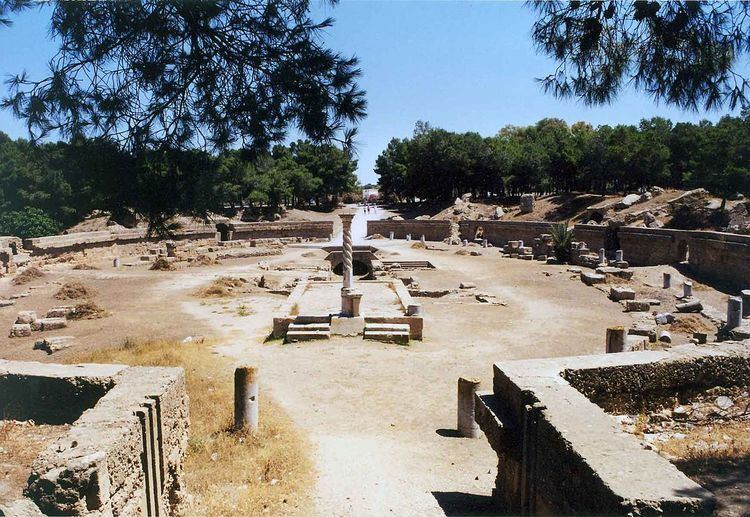Criteria iii, iv UNESCO World Heritage Site inscription 1993 | Type Cultural Reference 664 | |
 | ||
UNESCO region Europe and North America | ||
My movie carthage amphitheatre nelson mandela musical 10 aug 2016
The amphitheater of Carthage was a Roman amphitheater built in the first century in the city of Carthage. It was rebuilt by Julius Caesar and became the capital of the Roman province of Africa.
Contents
- My movie carthage amphitheatre nelson mandela musical 10 aug 2016
- Carthage amphitheatre nelson mandela musical 10 aug 2016 1 tunisian anthem
- History
- Architectural features
- References
Predation plaguing the archaeological site only exists within the arena itself. The building earned the admiration of travelers, especially during the Middle Ages.
Carthage amphitheatre nelson mandela musical 10 aug 2016 1 tunisian anthem
History
The amphitheater of Carthage was built at the end of the First century or the beginning of the Second century, to the west of the hill of Byrsa. An inscription date certifies that it was in service from 133 - 139 C.E. It expanded during the Third century.
Al-Bakri gives an account of the amphitheater in the eleventh century, where he describes the monument as "[the] most wonderful Carthage: This building is composed of a circle of arches supported by columns and topped by other things similar to the forefront arcades. On the walls of this building, we see pictures representing animals [...] can be distinguished figures that symbolize the winds: the East looks smiling, and the West has a frowning face".
The height of the arches was the admiration of visitors during the Middle Ages, including Al Idrissi impressed by the "circus building consisting of approximately fifty arches," he says, "At the top of each arch is an arch, and the arch of the lower arch, we see various figures carved in relief and curious representations of humans, animals, ships, all executed with infinite skill and immense skill".
Since the monument has been raided by looters, the stone and metal have been leveled to the ground. Thus, only the arena remained open at the end of the Nineteenth century and beginning of the Twentieth century, in the middle of a grove of pine trees. The wall has been restored as well.
In 1887, a cross was erected in the center in memory of the martyrdom of Christians including Perpetua and Felicity. These two saints of the Catholic Church were probably martyred in a similar monument, although we are unsure of which one specifically. The modern construction of a chapel dedicated to the two holy women disrupted basement facilities in the amphitheater.
Architectural features
The amphitheater offers an arena 64.66 metres (212.1 ft) on 36.70 metres (120.4 ft), surrounded by a podium built in quadratum opus of 2.5 metres (8 ft 2 in) in height and stands based on a series of 54 spans. Its perimeter is outside of 120 metres (390 ft) on 93 metres (305 ft). During its expansion, its major axis is raised to 156 metres (512 ft) and a width of 128 metres (420 ft), with a front made of blocks Kadhel. Its capacity is estimated at 30,000 seats.
This is one of three African amphitheatres, with those 'of El Jem and Thapsus, to be built on flat ground, without backing of a hill.
